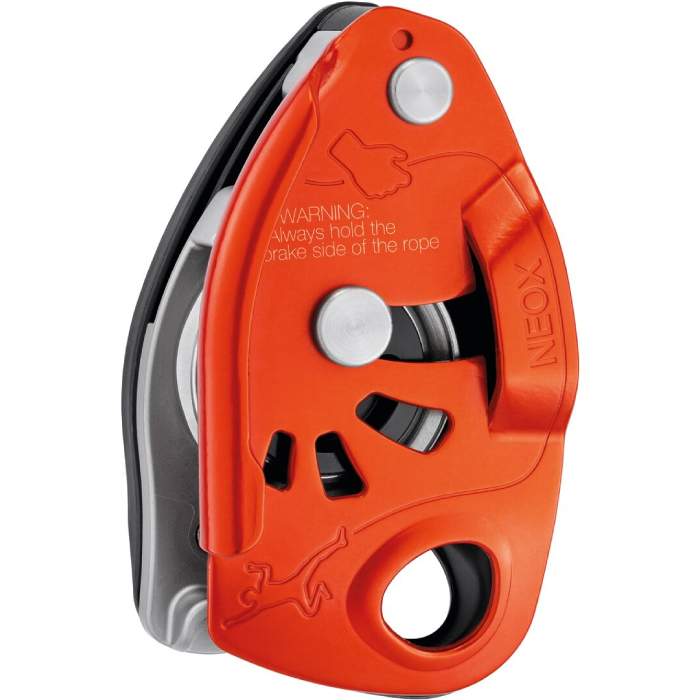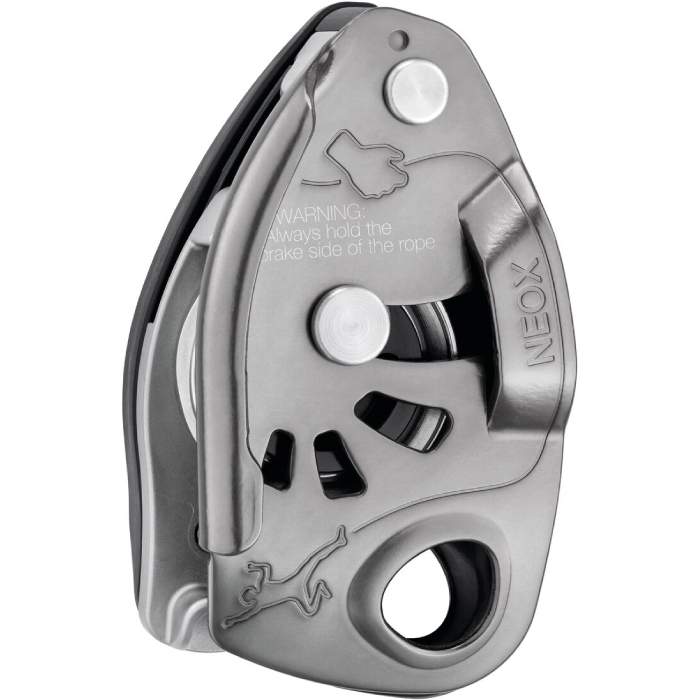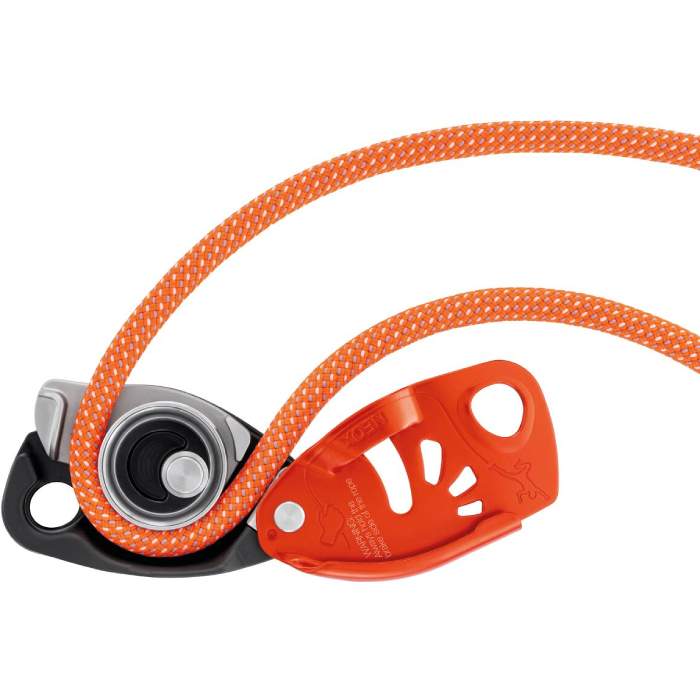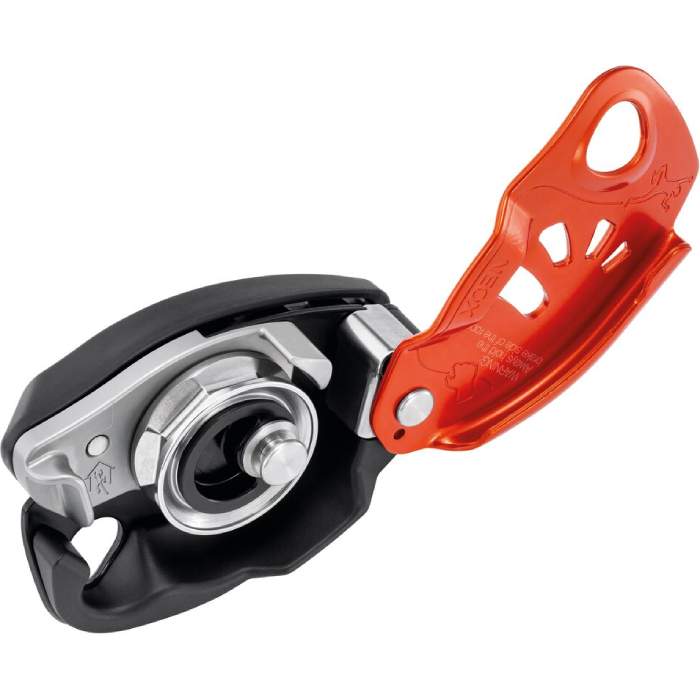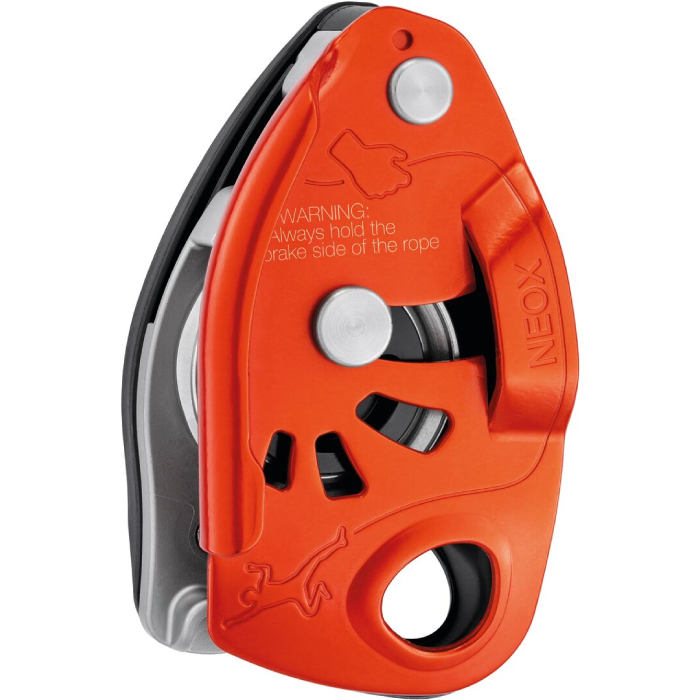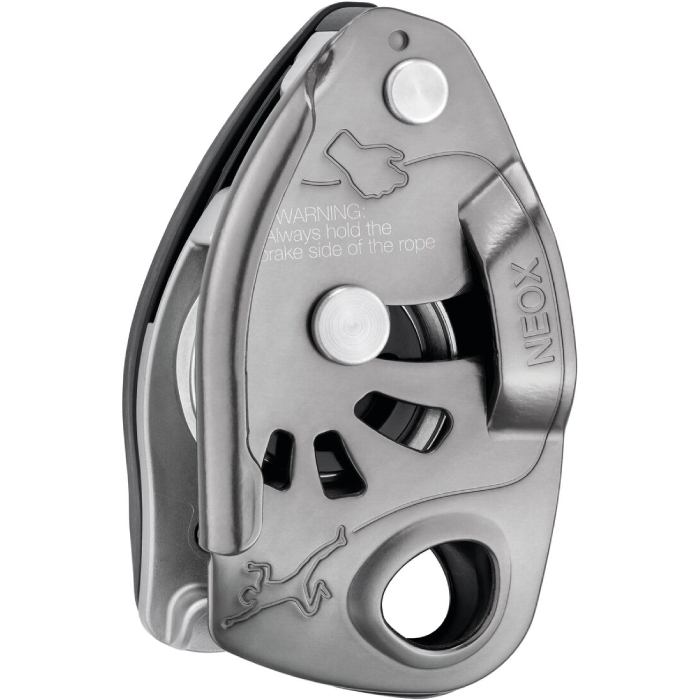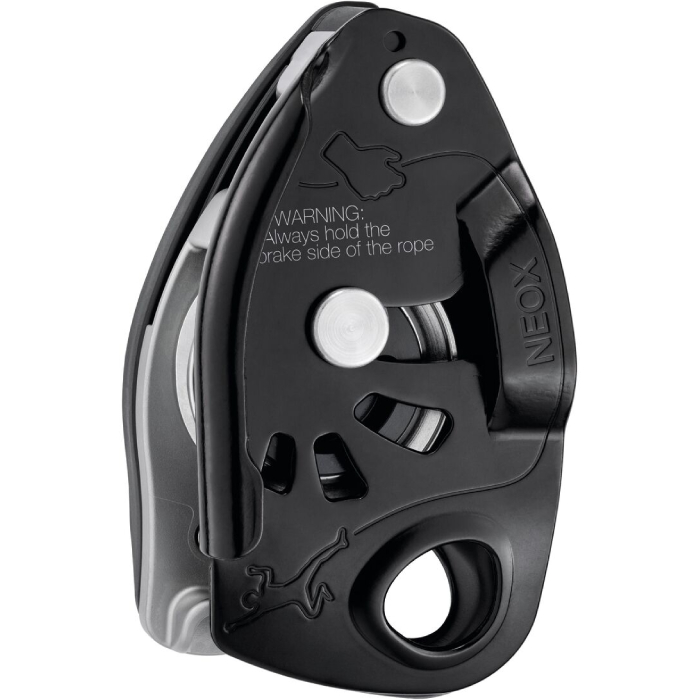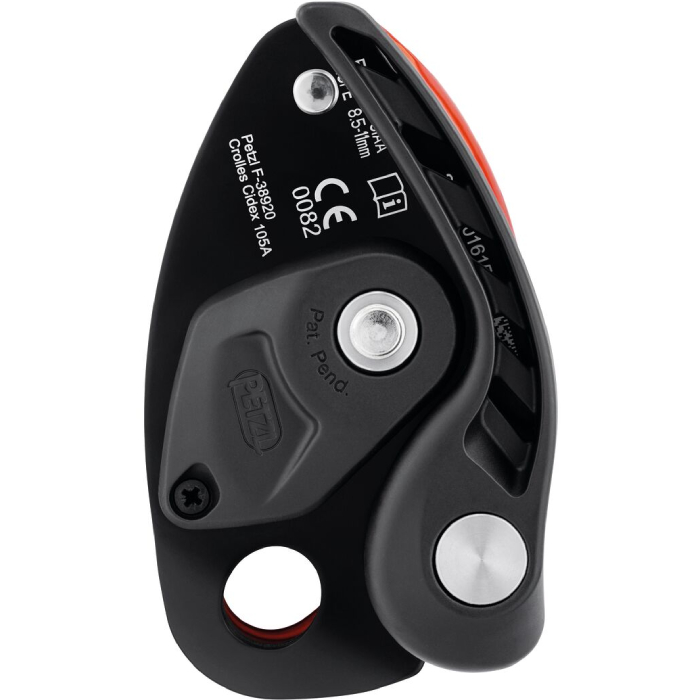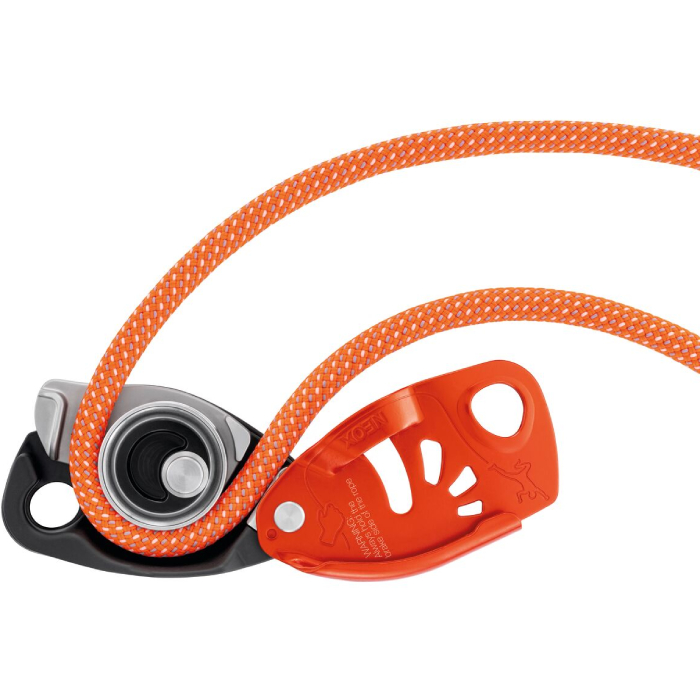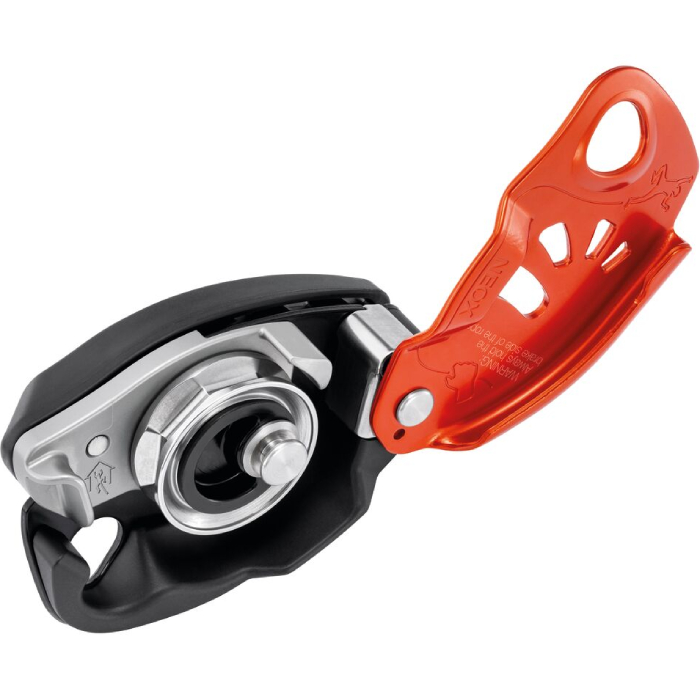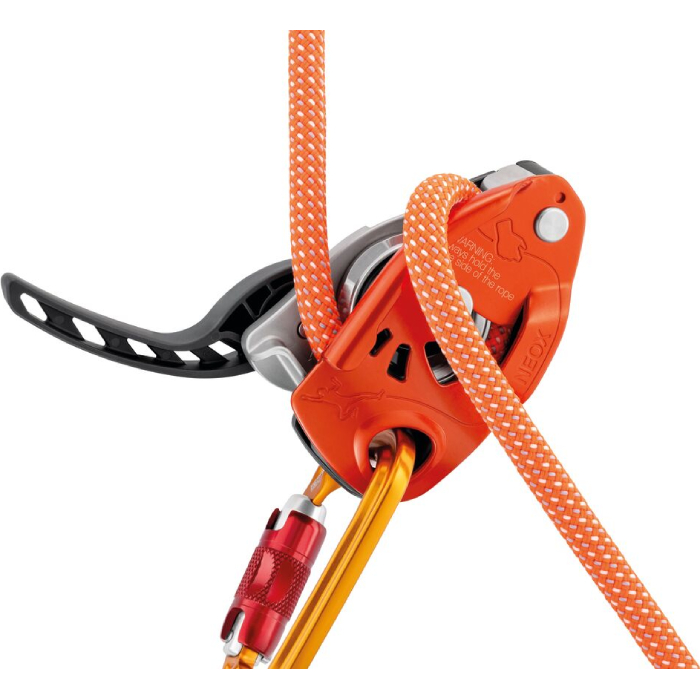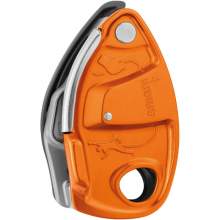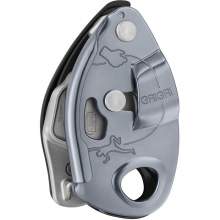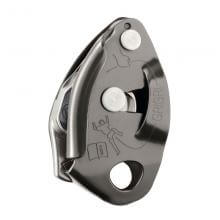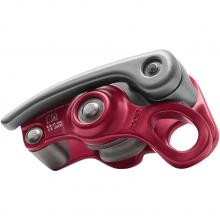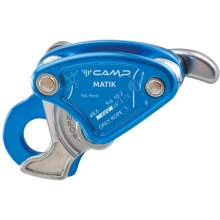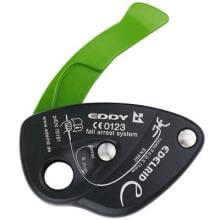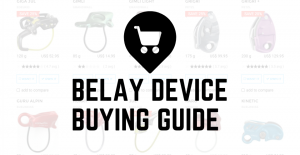A checklist to monitor your belay device, it helps you to know when to retire your belay device.
Neox
Description
Belay device with cam-assisted blocking, optimized for lead climbing.
Take your belay game to the next level. NEOX is an assisted blocking belay device for the gym and the crag. Ideal for lead climbing, it has an integrated wheel that allows you to smoothly and quickly pay out slack to the climber. Its ergonomic handle provides comfortable descent control. It can be used with single ropes from 8.5 to 11 mm.
- Belay device with cam-assisted blocking, optimized for lead climbing:
- For belaying both lead and top rope climbers
- Optimized for lead climbing, it has an integrated wheel that allows you to smoothly and quickly pay out slack to the climber
- Cam-assisted blocking for a more comfortable belay: when the climber falls or weights the system, the rope tightens, the wheel stops spinning, and the cam pivots to pinch and block the rope - Easy to use:
- Easy to install the rope with diagram engraved on the belay device
- Feeding slack and catching falls are accomplished using techniques standard to all Petzl belay devices, always keeping a hand on the brake side of the rope
- Cam-assisted blocking offers leeway for the brake-side hand position, regardless of the angle between the climber side and brake side of the rope
- Compatible with 8.5 to 11 mm dynamic single ropes and optimized for those 8.9 to 10.5 mm - Descent control:
- Ergonomic handle allows you to easily unblock the rope and lower someone
- 3:1 mechanical advantage from the handle and camming mechanism helps reduce the amount of effort needed to smoothly control the rate of descent, regardless of rope diameter - Eco-design: all plastic components, including the handle, are made with recycled nylon
Retail price
When you click a link below and then checkout online, no matter what you buy (climbing gear or not), we get a small commission that helps us keep this site up-to-date. Thanks!

Device Type  Device TypeTubeThe most commonly used belay type also called an “ATC” or “tuber.” Other than a distinction between other belay device types, “Tube” is a rarely used term, most climbers just assume you're talking about this style when they refer to your "belay device." 
Figure 8Mostly used in rescue, canyoneering, tactical, work safety, or by old school climbers and rappellers. One reason they went out of popularity with recreational climbers is because they tend to create twists in the rope. 
Brake AssistThese devices assist in stopping the rope when a climber falls or hangs on the rope. 
Often referred to as “auto-blocking” but that’s not the official terminology because no belay device should be assumed to work automatically by itself, even if it feels like it does (or does most the time). PlateWhen simplicity is a must, or you started climbing before Tubers were the norm. Bonus: They tend to be very light weight. 
DescenderFor rappelling, not for belaying a lead climber or top-roping. 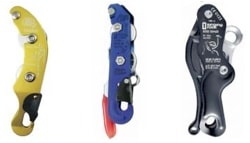 |
Brake Assist - Mechanical |
Weight (g)  Weight (g)In grams, the weight, as stated by the manufacturer/brand. |
235 g |
Belay Brake Assist  Belay Brake AssistThis is when the belay device significantly reduces the amount of holding power the belayer must exert to stop a fall and hold a climber. This is also called "assisted-braking" as the device must hold a significant amount of the climber’s weight; this term does not include friction-adding "teeth" found on some tube style belay devices. Confusingly referred to as “auto-blocking” or “auto-locking” these terms wrongly imply the device will always, automatically, stop a fall or hold a climber even if the belayer/rappeller is hands-free. These devices are not meant to be used without a hand on the braking side of the rope; the belayers/rapppeller brake hand should always be on the brake rope. Worth ConsideringMost of the mechanical brake assist devices only hold a single strand of rope and are not capable of double-strand rappelling (the most common method of rappel). |
Yes |
| Rope Options | 1 rope only |
Guide Mode  Guide ModeThis is when you belay directly off the anchor instead of your harness. Guide mode is helpful if you climb outdoors a lot because it reduces the holding power required from the belayer. When your partner falls or rests, the weight of the climber is held mostly by the anchor and the belay device. Tubers and PlatesWhen belaying in "guide mode," the tubers and plates turn auto-blocking. During a fall, the climbing rope pinches the slack rope, completely stopping the movement of either rope. A common guide mode setup shown below. 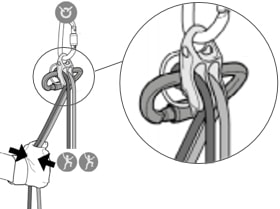
Mechanical Brake Assist DevicesThere is no difference in the functionality of the device. A brake-hand should always be on the rope to ensure the climber is caught in the case of a fall. A common guide mode setup shown below. 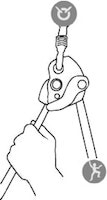
Where guide mode is used
Learn Morehttp://www.climbing.com/skill/essential-skills-auto-blocking-belay-devices/ |
1 follower only |
Teeth  TeethTeeth are only seen on tube devices. They add friction that helps grip the rope for more belaying control. This is helpful for belaying heavier climbers. Teeth are becoming standard on new tube devices. 
Worth ConsideringTeeth do wear out. You can limit wear by rappelling on the side without teeth (if you don’t need the extra friction). Once they’re worn, you’ll still have a usable belay device, just less friction. |
No |
Rope Range (mm)  Rope Range (mm)The range of rope diameters, in millimeters, that the manufacturer/brand specifies can safely be used. This is the best case scenario and does not necessarily take into consideration that certified ropes have a tolerance of +/- .3 mm. Recently, manufacturers have started to add an "optimized" rope range -- this is the range that will result in the nicest handling of the belay device. | 8.5 mm - 11.0 mm , optimized for 8.9 mm - 10.5 mm |
Certification  CertificationsThe main climbing gear certifications are CE and UIAA--and normally the UIAA creates the rules that the CE body also supports. When possible, we try to list all the certifications the product carries. To sell a climbing product in Europe, the device must be CE certified. There are no official requirements to sell climbing gear in the US. The UIAA certification is a voluntary process. Learn MoreRock and Ice Certifications Guide |
CE, EN, UIAA |
No reviews yet.
For single-pitch sport climbing, the Neox is the best assisted lead belay device on the market, delivering all the performance benefits of the Grigri but drastically improving the experience of feeding slack to a leader. Whether you're coming from an ATC or a Grigri, the Neox is an upgrade.
I think Petzl has designed a great product with the Neox. The hard part of reviewing it has been trying to figure out who it’s best suited for. I’ve heard some people claim the Neox is a device for only experienced climbers and belayers, which I find a bit puzzling. I think most belayers who’ve spent enough time using a GriGri and mastered the ‘thumb press’ technique are comfortable enough doing it quickly that they rarely short-rope their climber. Climbers who use skinny ropes (≤9.1mm) also won’t feel as much of a need for the Neox, since skinny ropes tend to run quite smoothly through a GriGri. I see the Neox being more appealing (and useful) for belayers who aren’t fluent with the GriGri ‘thumb press’ technique, but value its features as a cam-assisted device, or for those who use thicker ropes that tend to be a bit ‘sticky’ with a GriGri. Overall the Neox is a great device that does what it says on the packet. My only real complaints were the clacking noises it can make, and the fact that it’s more expensive than a GriGri but less versatile.
All assisted-braking devices (ABDs) must toe the line between providing a secure rope-pinching mechanism when the climber falls, and also allowing the belayer to feed out slack quickly when the lead climber is climbing quickly or clipping pieces of protection. The Petzl Neox finds the sweet spot on this spectrum, using a spinning wheel to reduce friction. This allows belayers to feed slack quickly and still provide a safe belay in the case of a leader fall. It is our preferred device for lead belaying.
The flip side to a faster-feeding device is that the Neox lets a little more rope through in a fall—not a huge amount, but usually about 6 to 12 inches. Friends and I noticed this right away with the prototypes, and I’ve confirmed this by using the Grigri and the Neox in the same day. The upside is that the Neox gives a softer catch, and, in a trad-climbing setting, will likely exert less force on your top piece, helping to avoid the dreaded gear-ripper; the downside is that, close to the ground, you’ll need to be more heads-up. And if weight in your pack is a concern, then perhaps those extra two ounces will matter, though I actually preferred the Neox’s extra heft and longer lowering handle.
So, I have now been using the PETZL NEOX for a couple of months and using it exclusively for all my indoor and outdoor lead belaying. I have been impressed at the handling capacity, it’s not going to work so well with your furry old, fat 10.5 climbing gym rope but for modern, thinner ropes it has been excellent. I use an 9.1mm rope for outdoor and a 10mm for indoors and they have both been fine (it is rated for rope diameters between 8.5 and 11mm). I feel that the NEOX may not a replacement for the GRIGRI and you should look to invest with the following in mind: if you climb long sports climbs of 30m+ and mostly lead climbs then the NEOX is perfect; if you do a lot of top roping, roped soloing and jugging/rigging style activities then the GRIGRI could be a better fit for you. For multi-pitch bolted routes and trad climbing then I’ll be sticking with my belay plate as I usually use double ropes on multi pitch because of the abbing. But… it would work perfectly fine for trad climbing with a single rope – which is the way many modern, hard trad routes are climbed.
Describes with words and helpful photos, how to protect your belay device and other metal equipment.

